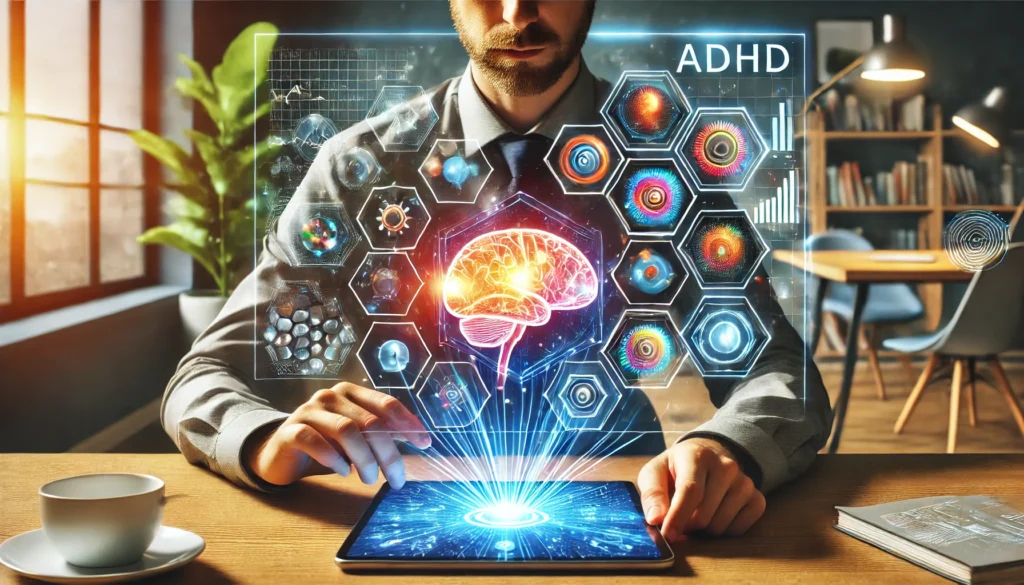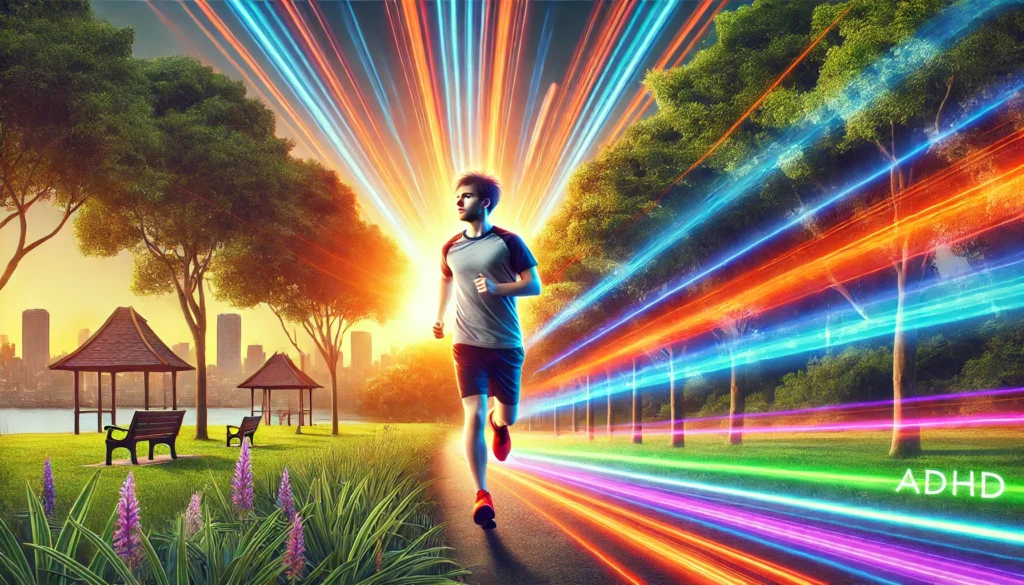Defining ADHD
ADHD is a neurodevelopmental disorder that affects millions worldwide. It is characterized by persistent patterns of inattention, hyperactivity, and impulsivity. These symptoms can vary significantly from person to person, making it a complex condition to understand and manage. Individuals with ADHD often face challenges in academic, professional, and personal settings due to their difficulties in maintaining focus and controlling impulses.
You may also like: Enhancing Concentration: Strategies for ADHD
The Impact of ADHD on Daily Life
The effects of ADHD extend beyond the inability to focus. They can influence emotional regulation, social interactions, and even self-esteem. Children with ADHD might struggle in school due to difficulties following instructions or completing tasks, while adults may find it challenging to meet deadlines or maintain relationships. Understanding these impacts is crucial for developing effective management strategies, including the use of attention exercises.
The Science Behind Attention Exercises
Attention exercises are designed to improve the mental processes involved in focusing, sustaining attention, and resisting distractions. These exercises can be particularly beneficial because they empower individuals to take an active role in managing their ADHD symptoms. By targeting specific cognitive functions, attention exercises can help rewire the brain to improve overall concentration and task execution. Scientific studies have shown that regular practice of these exercises can lead to long-term improvements in attention span and cognitive flexibility.

Effective Attention Exercises for ADHD
Mindfulness Meditation
Mindfulness meditation is a practice rooted in ancient traditions but has gained prominence in modern psychology as an effective tool for improving attention and reducing stress. For individuals with ADHD, mindfulness meditation can help by enhancing self-awareness and promoting a non-judgmental focus on the present moment.
How to Practice Mindfulness Meditation
To practice mindfulness meditation, find a quiet space, sit comfortably, and focus on your breathing. When your mind wanders, gently bring your attention back to your breath. Start with short sessions and gradually increase the duration as your ability to concentrate improves. Consistency is key, so try to incorporate mindfulness meditation into your daily routine for the best results.
Benefits of Mindfulness for ADHD
Mindfulness meditation can help individuals with ADHD develop greater self-control and emotional regulation. It encourages a sense of calm and reduces the feeling of being overwhelmed, which can be common in those with ADHD. Over time, mindfulness practice can lead to improved focus, reduced impulsivity, and a greater sense of well-being.
Mindfulness Resources
Numerous resources are available for those interested in exploring mindfulness meditation further. Apps like Headspace and Calm offer guided meditations specifically designed to enhance focus and reduce stress. Books and online courses can also provide deeper insights into the practice and its benefits for ADHD.
Cognitive Training Games
Cognitive training games, often found in apps or online platforms, are designed to enhance various cognitive functions, including attention, working memory, and problem-solving skills. Games like Lumosity or CogniFit provide structured challenges that can help strengthen attention over time.
The Science Behind Cognitive Games
These games are developed based on cognitive neuroscience principles and are designed to target specific brain functions. By engaging in regular cognitive training, individuals with ADHD can experience improvements in attention span, working memory, and even processing speed. Scientific research supports the use of cognitive games as a supplementary tool for ADHD management.
Choosing the Right Games
Not all cognitive games are created equal. It’s important to choose games that are engaging, challenging, and tailored to your specific needs. Look for platforms that offer a variety of games targeting different cognitive skills. Regularly switch between games to ensure a comprehensive cognitive workout.
Integrating Games into Daily Life
To get the most benefit from cognitive training games, incorporate them into your daily routine. Set aside a specific time each day for playing these games, and track your progress to stay motivated. Remember, consistency is more important than duration, so even a few minutes a day can lead to significant improvements.
Physical Exercise
Physical exercise is not only beneficial for physical health but also plays a crucial role in improving mental focus. Activities such as yoga, aerobics, or even a brisk walk can help reduce ADHD symptoms by increasing dopamine and norepinephrine levels in the brain, which are chemicals associated with attention and focus.
Types of Exercise for ADHD
Not all exercises are equally beneficial for managing ADHD symptoms. Aerobic exercises like running, cycling, and swimming are particularly effective because they elevate heart rate and increase blood flow to the brain. Strength training and yoga can also be beneficial by improving overall physical health and promoting a sense of calm and focus.
Creating an Exercise Routine
Incorporate regular physical activity into your routine to experience these benefits. Aim for at least 30 minutes of moderate exercise most days of the week. Choose activities that you enjoy to make exercise a sustainable part of your lifestyle. Mixing different types of exercise can keep your routine interesting and engaging.
The Impact of Exercise on Mental Health
Beyond improving focus and attention, regular physical exercise can have a positive impact on overall mental health. It can help reduce symptoms of anxiety and depression, improve mood, and boost self-esteem. For individuals with ADHD, exercise can be a powerful tool for managing symptoms and enhancing quality of life.
The Pomodoro Technique
The Pomodoro Technique is a time management strategy that can be particularly effective for individuals with ADHD. It involves breaking work into intervals, traditionally 25 minutes in length, separated by short breaks. This method encourages sustained focus for manageable periods and helps prevent burnout.
How to Use the Pomodoro Technique
To implement the Pomodoro Technique, choose a task, set a timer for 25 minutes, and work uninterrupted. When the timer rings, take a 5-minute break. Repeat this cycle, taking a longer break after four intervals. This method helps maintain focus while preventing mental fatigue.
Benefits for ADHD
The Pomodoro Technique aligns well with the ADHD brain’s need for structure and frequent rewards. By breaking tasks into manageable segments, it reduces the feeling of being overwhelmed and encourages a sense of accomplishment. Over time, it can help improve time management skills and productivity.
Tools to Support the Pomodoro Technique
There are numerous apps and tools available to help implement the Pomodoro Technique. Apps like Focus Booster and Tomato Timer offer customizable timers and tracking features to enhance your productivity. Experiment with different tools to find one that fits your preferences and workflow.
Visualization Exercises
Visualization exercises involve creating mental images to improve focus and concentration. For individuals with ADHD, visualization can help in organizing thoughts and planning tasks.
How to Practice Visualization
To practice visualization, close your eyes and imagine completing a specific task step-by-step. Visualize the environment, actions, and outcomes as vividly as possible. This practice can help clarify goals and enhance task execution. Start with simple tasks and gradually progress to more complex scenarios.
Benefits of Visualization
Visualization can be a powerful tool for improving focus and reducing anxiety. By mentally rehearsing a task, individuals with ADHD can increase their confidence and feel more prepared to tackle real-life challenges. This technique can also enhance creativity and problem-solving skills.
Applications in Daily Life
Incorporate visualization exercises into your daily routine by setting aside a few minutes each day for practice. Use visualization to prepare for important meetings, presentations, or tasks that require sustained focus. Over time, this practice can lead to improved performance and reduced stress.

Strategies for Children with ADHD
Games and Puzzles
Children with ADHD often benefit from games and puzzles that require sustained attention and problem-solving. Activities like jigsaw puzzles, memory games, or board games can improve focus in a playful and engaging manner.
Selecting Appropriate Games
Choose games that are age-appropriate and gradually increase complexity to challenge their attention span. Look for games that require strategic thinking and encourage collaboration, as these can help improve social skills and cognitive function.
Encouraging Regular Play
Incorporate game time into your child’s daily routine to provide a structured opportunity for attention practice. Encourage them to play with siblings or friends to enhance social interactions and teamwork skills. Monitor their progress and offer praise for their achievements to boost confidence.
Benefits of Play for ADHD
Play is a natural way for children to develop cognitive and social skills. Games and puzzles can improve memory, attention span, and problem-solving abilities. They also provide an opportunity for children to practice patience and impulse control, which are essential skills for managing ADHD.
Structured Playtime
Structured playtime involves setting specific times for play activities, providing children with ADHD a sense of routine and predictability. This approach can help them learn to focus on one activity at a time and improve their ability to transition between tasks.
Creating a Playtime Schedule
Create a schedule that includes time for both free play and structured activities to support their attention development. Use visual aids like charts or calendars to help children understand and anticipate their daily routine. Involve them in the planning process to encourage ownership and responsibility.
Benefits of Structured Play
Structured playtime helps children with ADHD develop a sense of security and stability. It teaches them how to manage their time effectively and prioritize tasks. By providing clear expectations and boundaries, structured play can reduce anxiety and improve focus.
Balancing Free and Structured Play
While structured play is important, it’s also crucial to allow time for free play, where children can explore their creativity and interests. Balance structured activities with opportunities for imaginative play to support overall development and well-being.

Implementing Attention Exercises in Daily Life
Integrating attention exercises into daily routines can be a gradual process. Start by selecting one or two exercises that resonate with your lifestyle and gradually incorporate more as you become comfortable. Consistency is key, so aim to practice these exercises regularly for the best results.
Tips for Success
Set Realistic Goals
Begin with achievable objectives and gradually increase the complexity of exercises as your attention improves. Setting realistic goals helps maintain motivation and prevents feelings of frustration or overwhelm.
Create a Supportive Environment
Minimize distractions in your surroundings to help maintain focus during exercises. Designate a specific area for practice, free from noise and interruptions. Use tools like noise-cancelling headphones or focus-enhancing apps to create an optimal environment for attention exercises.
Monitor Progress
Keep track of improvements in attention and celebrate small victories to stay motivated. Use journals, apps, or charts to record your progress and reflect on the benefits you’ve experienced. Regularly reviewing your achievements can boost confidence and encourage continued practice.
Seek Professional Guidance
Consult with a healthcare professional or therapist to tailor exercises to your specific needs and challenges. Professionals can offer personalized recommendations and support, ensuring that your attention exercises are effective and aligned with your overall ADHD management plan.
Future Implications and Innovations
The future of ADHD management holds promise with ongoing research and technological advancements. Virtual reality (VR) is being explored as a tool for immersive cognitive training, offering a new dimension to attention exercises. Similarly, biofeedback technology is gaining traction, providing real-time feedback on physiological responses to enhance focus and self-regulation.
Virtual Reality in Cognitive Training
Virtual reality offers an immersive environment that can simulate real-life scenarios, providing a unique opportunity for cognitive training. VR-based exercises can improve attention, spatial awareness, and problem-solving skills. As technology advances, VR may become a valuable tool in ADHD management, offering engaging and effective ways to practice attention skills.
Biofeedback and Self-Regulation
Biofeedback technology monitors physiological signals, such as heart rate and brain activity, to provide real-time feedback. This information can help individuals with ADHD develop greater awareness and control over their physiological responses, enhancing focus and emotional regulation. As biofeedback devices become more accessible, they may offer a powerful supplement to traditional attention exercises.
The Role of AI and Machine Learning
Artificial intelligence and machine learning are being integrated into cognitive training programs to create personalized and adaptive exercises. These technologies can analyze individual performance and adjust the difficulty and focus of exercises in real time, optimizing the benefits for each user. As AI continues to evolve, it may revolutionize the way attention exercises are delivered and tailored to individual needs.
Conclusion
Attention exercises offer a practical, non-pharmacological approach to managing ADHD symptoms. By incorporating mindfulness meditation, cognitive training, physical exercise, and other strategies into daily life, individuals can improve focus and concentration, ultimately enhancing their overall quality of life. With commitment and consistency, these exercises can be a valuable addition to any ADHD management plan. As research and technology continue to advance, the potential for innovative and effective attention exercises will only grow, providing new opportunities for individuals with ADHD to thrive.
Further Reading:
Brain Training to Treat ADHD Symptoms
Balance Exercises: An Alternative Treatment for ADHD
The Attention Games: Catching Focus Through Fun
Important Note: The information contained in this article is for general informational purposes only, and should not be construed as health or medical advice, nor is it intended to diagnose, prevent, treat, or cure any disease or health condition. Before embarking on any diet, fitness regimen, or program of nutritional supplementation, it is advisable to consult your healthcare professional in order to determine its safety and probable efficacy in terms of your individual state of health.
Regarding Nutritional Supplements Or Other Non-Prescription Health Products: If any nutritional supplements or other non-prescription health products are mentioned in the foregoing article, any claims or statements made about them have not been evaluated by the U.S. Food and Drug Administration, and such nutritional supplements or other health products are not intended to diagnose, treat, cure, or prevent any disease.


